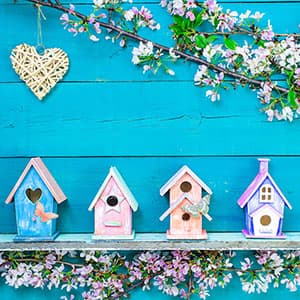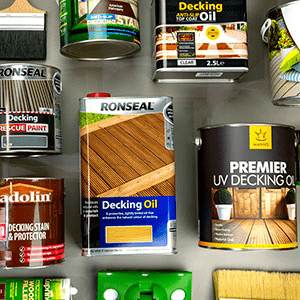Paint FAQ's
How would you describe the difference between a matt, satin and gloss paint finish?
Sheen levels are subjective to a degree as different paint manufacturers have different interpretations of how much reflectivity a matt, satin and gloss paint should have. In general, matt paints produce a finish that has no or very little sheen. These paints are usually used on walls and ceilings and are less likely to show any surface imperfections.
Another way to describe satin is eggshell. In other words, the sheen level is about the same as the surface of an egg when 1 coat has been applied. 2 coats will very slightly increase the sheen level.
Gloss finishes have a higher reflectivity than satin or satin-gloss paints. Some paints and varnishes are even labelled as super-gloss. Typically, you will be able to see a good reflection of objects in a gloss paint. Gloss paints are more commonly used for home fixtures such as skirting boards, architraves, doors and so on.
What product can I use to seal and protect my chalk paint?
Chalk paint is a popular product for up-cycling interior furniture. It offers a little protection for surfaces; however it is more of an aesthetic finish. Wax is the most common surface sealer for chalk paints, but you can also use a varnish, taking care not to overwork the varnish, as this can pull the paint. Varnishing over chalk paint will typically 'warm' the colour. E.g. shades of white become creamier.
Are there any eco-friendly paints for interior walls and ceilings?
Which is best, a water-based or solvent-based white gloss paint?
How long will an exterior paint last?
This is a difficult question to answer as it can depend on the type of substrate, the preparation of the substrate, the application and type of paint and the amount of weathering that the surface is subjected to. As an example, paint on a cliff top property that is subjected to high winds and sea air will wear more quickly than paint on a sheltered town house. Some manufacturers supply paints that are advertised lasting up to a specified number of years as long as the correct preparation and application conditions are met.
I have a worktop outside that I use to serve hot food from. It has already been painted yellow and I'm looking to protect it without changing the colour too much. What would you recommend?
Polyvine Decorators Varnish is an exterior-grade clear, water-based acrylic varnish for use on wood, paintwork, wallpaper, fabric, plaster and much more. It contains UV filters to protect coloured surfaces from fading and biocides that protect against algae, mildew and fungal attack.
Oils would not be suitable as they need to penetrate into the wood and cannot if the paint has formed a coating on the wood. They are also more likely to discolour the finish due to the nature of the ingredients they are made from.
We can never guarantee one manufacturers product over another and a test area is essential to test product suitability and final finish.
What sort of paint should I use on kitchen walls?
Kitchen walls and ceilings can be subjected to a wide range of issues including moisture, grease, stains and more. For this reason, you'll need an emulsion paint that is tough, durable and washable. Dulux Easycare Kitchen Matt is perfect as it ticks all of these boxes and is available in around 30 paint colour shades, making it ideal for any style of kitchen. It is a durable, water-based emulsion for kitchen walls and ceilings, that can be applied by brush or roller. It is highly resistant to grease and stains, and dries to an attractive, stylish, matt finish.
For wooden and metal surfaces, see our full range of Dulux paints.
What is the best varnish for overcoating clay/chalk paint?
If you don't fancy the shabby chic look you can strengthen a surface coated with clay or chalk paint with a perfectly clear varnish. These are usually water-based and need to be non-yellowing to avoid the discolouration of the paint.
Manns Extra Tough Interior Varnish is a clear, non-yellowing, polyurethane interior varnish that is suitable for any interior wooden project, including flooring. It is also available in 4 separate sheen levels to add a unique twist to the project if you require. Another great example is Polyvine Decorators Varnish. This ideal for almost any interior project including wood, fabric, wallpaper and much more. Unbeatable protection against finger marks, stains, scuffing and fading.
What type of paint should I use in a bathroom?
Bathrooms are high moisture environments so surfaces need to be sealed to prevent water or moisture ingress, into wood or plaster surfaces, that can then go on to develop mould, algae, or wood rot.
There are various options available from Dulux paints, including paints for wood, metal, walls and ceilings. Dulux Easycare Bathroom Soft Sheen is specifically designed for bathrooms. Available in over 30 attractive colour tones, this water-based emulsion paint is perfect for bathroom walls and ceilings. It is steam and moisture resistance and offers a 5 years mould protection guarantee. This paint can be brush or roller applied and dries to a soft sheen finish.
For wooden and metal surfaces such as bathroom skirting boards, doors, architraves, pipes and radiators, see our full range of Dulux paint products.
What paint colours are popular for garden fences?
The choice of paint colour for a garden fence is largely down to personal preference. The perfect colour for one garden or person may be totally wrong for another. When considering colours, its worth remembering a couple of things. Wood paints for garden sheds and fences tend to have a stronger, more vibrant colour when first applied. This usually tones down a little as the wood is subjected to weathering. Soft grain woods are more porous than hard woods. Because of this, they absorb more of the paint which mean that colours will tend to be stronger and darker. We always recommend doing a test area to assess the paint suitability and colour before starting any project. It's far easier to paint over or sand out a small test patch than having to live with a colour you don't like or repaint a whole fence.
In terms of popular colours black, green or grey fence paint colours have seen a surge in popularity over recent years, with darker colours enhancing the natural greens and other colours around the garden. Other popular choices are shades of blue and purple.
I have a small box room that needs painting. I would like to use a colour but I'm afraid that a coloured paint will make the room appear even smaller. Do you have any suggestions?
I'm looking for a black, gloss, radiator paint, can you recommend one?
What pastel colour wood paints are there for interior wood?
I have moved into a new house and am looking to redecorate each room. Which type of paint is best?
We're going to make some assumptions about your question as unfortunately, it wasn't very specific. In terms of walls and ceilings, the norm is to paint these with a durable emulsion paint. For ceilings, most people usually go for a white or brilliant white paint but this isn't always the case. We're assuming that in terms of the walls, you'll be looking for an emulsion paint that is available in a range of colours.
In terms of sheen level, there is a choice of either going for a paint that gives a soft sheen, or one that provides a matt finish. Matt emulsion paints are more forgiving as they are better at hiding any slight imperfections if the walls are not perfectly straight. Many would also say that a matt finish gives a more modern look.
Both Crown paints and Dulux offer a range of paints for walls and ceilings as well as others for interior wood and metal if you have skirting boards, architraves and other fixtures to paint. One option that could work well for walls is Dulux Matt Paint for walls and ceilings. This is a durable emulsion paint that is available in a wide range of Dulux colours.
For alternative options, see our full range of Crown paints and Dulux paints.
What type of paint should I use for a busy hallway?
Emulsion paints are the norm for walls and ceilings in most rooms but in the past, emulsions used to be susceptible to scuffs, marks, stains, and dirt. When trying to wipe these clean, it often resulted in an amount of paint also being wiped off. This was far from ideal in busy hallways, living rooms, and children's bedrooms, where dirty marks and scuffs are common.
Thankfully, paint technology has evolved over the years and newer emulsion paints are much more durable than they used to be. A great example of this is Dulux Easycare Washable and Tough Matt , this emulsion paint has been developed to be 20 times tougher than standard matt emulsion, contains unique stain repellent technology to prevent staining, and can be wiped down without causing damage or colour fade. This makes it especially suitable for hallways, living rooms, and children's bedrooms. Dulux Easycare Washable and Tough is also available in a wide range of Dulux colours.
I want to paint my radiators and skirting boards with a colour, rather than just being White. Is there a paint that I can use on both?
There are a range of paints that can be used on both interior wood and metal. One of these is the 'Dulux Once' paint range. Depending on what type of finish you prefer in terms of gloss or satin, you could consider either Dulux Once Satinwood or Dulux Once Gloss. Both are available in a range of Dulux paint colours and can be used on both radiators and woodwork such as skirtingboards and architraves.
Wood Paint related blog posts
- Garden design ideas - Using paint to add colour and style
- The Big Brush Issue - Synthetic Vs Natural Paint Brushes - What Brush To Use
Disclaimer: Whilst every attempt has been made to provide product information that is as accurate as possible, it's important to clarify that trees and the wood that they produce can be affected by many factors. For example, the same species of tree grown in the same wood, even in close proximity, will be affected by age along with the amount of sunlight and water they receive. Other naturally occurring biological and environmental factors will also influence the density and grain of the wood as well as the moisture and oil content of the timber. No two trees are the same, meaning each piece of wood has the potential to look and react differently to the same wood finish. For example, product adhesion, colour variations, absorption rates and sheen levels. It is for this reason that we always strongly recommend carrying out test areas before starting any project


